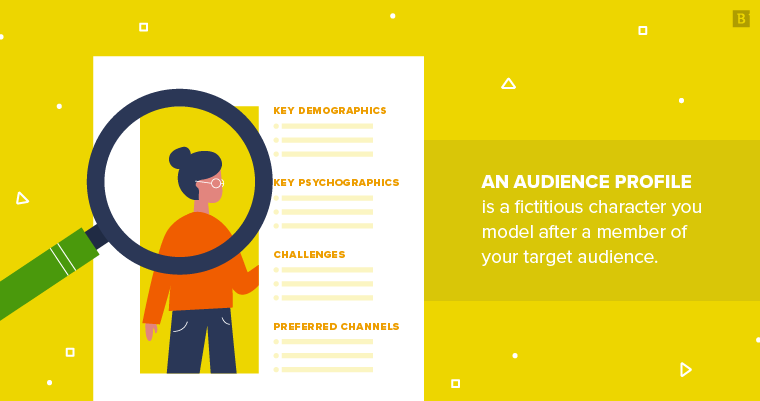Unlock the secret to successful communication – learn how analyzing your audience can supercharge your results and elevate your content!

Image courtesy of via DALL-E 3
Table of Contents
Welcome to our blog post about audience analysis! Do you ever think about who is reading what you write or say? Knowing your audience can make a big difference in how well your message gets across. Let’s explore why understanding your audience is so important and how it can help you communicate better to get great results.
Why Knowing Your Audience is Important
Before you start writing or speaking, it’s crucial to understand who your audience is. Imagine talking about your favorite video game to a group of people who have never played it before – they might not understand what you’re talking about! When you know who you’re talking to, you can tailor your message to suit them better, making sure they understand and engage with what you’re saying or writing. This helps you communicate effectively and achieve your goals.
What is Audience Analysis?
Before we dive into the details of audience analysis, let’s first understand what this term actually means. Audience analysis is the process of examining and evaluating information about the people you expect to read, listen to, or watch your message. In simpler terms, it’s about getting to know who your audience is and what they care about.
Definition of Audience Analysis
So, what exactly is audience analysis? It’s like detective work, but instead of solving a mystery, you’re trying to understand who will be on the other side of your communication. By analyzing your audience, you can tailor your message to better suit their needs, interests, and preferences.
Purpose of Audience Analysis
The main reason we conduct audience analysis is to make sure our message hits the mark. Imagine trying to talk about your favorite video game to a group of soccer fans – they might not be as interested in what you have to say! By understanding your audience, you can communicate more effectively and get better results.
Types of Audiences
Understanding the different types of audiences you may encounter is essential for effective communication. Let’s explore the primary and secondary audiences and how they play a role in audience analysis.
Primary Audience
Your primary audience is the group of people you are directly speaking to or creating content for. They are your main target audience and the individuals you want to engage with the most. Understanding their demographics, interests, and preferences is crucial for tailoring your message to resonate with them effectively. For example, if you are a children’s book author, your primary audience would be kids aged 8-12 who enjoy adventure stories.
Secondary Audience
In contrast, your secondary audience consists of individuals who may indirectly interact with your content or message. While they are not your main focus, their reactions and responses can still impact the success of your communication. Secondary audiences might include parents of the children reading your books or teachers who recommend your work to students. It’s important to consider their perspectives as well to ensure your message is well-received across different groups.
Steps to Conduct Audience Analysis
Before you start communicating with your audience, it’s essential to have clear goals in mind. Think about what you want to achieve through your communication. Whether it’s to inform, persuade, entertain, or educate, knowing your objectives will help you tailor your message effectively.
Image courtesy of www.techsciresearch.com via Google Images
Step 2: Gather Information
Once you have your goals set, the next step is to gather relevant information about your audience. This information can include demographics (age, gender, location), psychographics (interests, values, beliefs), and behaviors (online activities, purchasing habits). By understanding who your audience is, you can craft messages that resonate with them.
Step 3: Analyze the Information
After collecting data about your audience, it’s time to analyze it. Look for patterns, trends, and insights that can help you understand your audience better. By interpreting the information you’ve gathered, you can identify key characteristics and preferences that will guide your communication strategy.
Step 4: Apply Your Findings
Once you’ve analyzed the information, the final step is to apply your findings to improve your communication. Use the insights you’ve gained to tailor your messages, select appropriate channels, and create content that resonates with your audience. By applying your audience analysis effectively, you can enhance the impact of your communication efforts.
Tools for Audience Analysis
When it comes to understanding your audience better, there are several tools that can make the process easier and more effective. These tools help you gather data, analyze information, and gain valuable insights into who your audience is. Let’s explore some of the key tools that can aid in audience analysis:
Google Analytics
If you have a blog or a website, Google Analytics can be a valuable tool for audience analysis. This free tool provides detailed information about your website visitors, including demographics, interests, and behavior. By analyzing this data, you can gain a better understanding of who is visiting your site, what they are interested in, and how they are engaging with your content.
Surveys
Surveys are a great way to gather direct feedback from your audience. You can create surveys to ask specific questions about your audience’s preferences, interests, and needs. By analyzing the responses, you can identify patterns and insights that can help you tailor your content to better meet the needs of your audience.
Social Media Insights
Social media platforms like Facebook, Twitter, and Instagram provide valuable insights into the behavior and preferences of your audience. By analyzing metrics such as engagement, reach, and demographics, you can gain a deeper understanding of who is following you on social media and how they are interacting with your posts. This information can help you create more targeted and relevant content that resonates with your audience.
Using Audience Analysis for Better Communication
When you know who you are talking to, it’s easier to adjust your message to fit their needs and preferences. Imagine you are speaking to a group of students about your favorite video game. You would use different words and examples than if you were talking to a group of older adults. This way, your message is more likely to resonate with your audience and keep them interested.

Image courtesy of www.pointvisible.com via Google Images
Engaging Your Audience
Engaging your audience means keeping them interested and involved in what you are saying or writing. If you understand your audience well, you can use engaging techniques that appeal to them. For example, if you’re writing a story for kids, you might add colorful illustrations or interactive elements to make it more fun for them. By using audience analysis to engage your audience, you can create a more enjoyable and effective communication experience.
Examples of Effective Audience Analysis
Let’s say there’s a blog that talks about video games. The writer notices that a lot of their readers are young gamers who enjoy quick and easy-to-understand tips on how to improve their gaming skills. By analyzing the audience, the writer decides to create a series of short, informative posts with practical gaming strategies.
The result? The blog’s readership skyrockets as the content resonates with the target audience, leading to increased engagement and sharing of the blog posts. This successful outcome was all thanks to the writer’s understanding of who their audience was and what they were looking for.
Example 2: A Successful Marketing Campaign
Imagine a company that sells eco-friendly home products. Before launching a new marketing campaign, they conduct audience analysis to identify their target audience: environmentally-conscious consumers who prioritize sustainability. Armed with this information, the company designs a campaign emphasizing the eco-friendly benefits of their products.
The response is phenomenal – sales soar, and the brand gains a reputation for being environmentally responsible. This success can be directly attributed to the careful audience analysis that guided the marketing campaign, ensuring that the message resonated with the intended audience.
Conclusion
In this blog post, we have explored the importance of audience analysis and how it can significantly impact your communication efforts. By understanding who your audience is and what they need, you can tailor your message to resonate more effectively with them. Let’s quickly recap the key points discussed.

Image courtesy of www.brafton.com via Google Images
Recap of Key Points
We started by understanding why knowing your audience is crucial for successful communication. Then, we delved into what audience analysis is and the different types of audiences you may encounter. Next, we outlined a step-by-step guide on how to conduct audience analysis, emphasizing the importance of defining goals, gathering relevant information, analyzing data, and applying findings. We also introduced some tools like Google Analytics, surveys, and social media insights to aid in audience analysis. Additionally, we discussed how the insights gained from audience analysis can be used to better tailor your message and engage your audience effectively. Finally, we presented examples of successful audience analysis, showcasing its impact on popular blogs and marketing campaigns.
Final Thoughts
Wrapping up, it’s clear that audience analysis is a powerful tool that can elevate your communication strategies. By taking the time to understand your audience, you can create content that resonates, engages, and drives results. Remember, knowing your audience is not just a one-time task but an ongoing process that can lead to enhanced communication and stronger connections. So, the next time you sit down to write a blog post or plan a marketing campaign, remember to put audience analysis at the forefront of your strategy!
Want to turn these SEO insights into real results? Seorocket is an all-in-one AI SEO solution that uses the power of AI to analyze your competition and craft high-ranking content.
Seorocket offers a suite of powerful tools, including a Keyword Researcher to find the most profitable keywords, an AI Writer to generate unique and Google-friendly content, and an Automatic Publisher to schedule and publish your content directly to your website. Plus, you’ll get real-time performance tracking so you can see exactly what’s working and make adjustments as needed.
Stop just reading about SEO – take action with Seorocket and skyrocket your search rankings today. Sign up for a free trial and see the difference Seorocket can make for your website!
Frequently Asked Questions (FAQs)
What is the first step in audience analysis?
The first step in audience analysis is defining your goals. Before you start communicating with your audience, it’s essential to have a clear understanding of what you want to achieve. Setting specific goals will help you tailor your message effectively to reach your audience.
Why is audience analysis important?
Audience analysis is important because it helps you understand who you are communicating with, allowing you to tailor your message to their specific needs and preferences. By knowing your audience, you can create more impactful and relevant content that resonates with them, leading to better communication and engagement.
How can I gather information about my audience?
There are several methods you can use to gather information about your audience. One common approach is conducting surveys to collect demographic data, preferences, and feedback. Utilizing tools like Google Analytics can also provide valuable insights into the online behavior of your audience. Additionally, monitoring social media insights can help you understand the interests and engagement levels of your audience.







